Benefits of Using Biodegradable Trays
Biodegradable trays, crafted from sustainable materials such as sugarcane and cornstarch, offer numerous advantages, making them a popular choice for those with a conscientious regard for the environment. Not only do these trays contribute to the reduction of our carbon footprint, but they also aid in the preservation of our precious natural resources.
Environmental Friendliness
One of the key benefits of utilizing biodegradable trays lies in their positive impact on the environment. These trays are fashioned from materials that possess the remarkable ability to naturally break down over time, thereby lessening the amount of waste that finds its way into overcrowded landfills. By embracing the use of biodegradable trays, we can significantly diminish our carbon footprint and alleviate the burdensome weight on our planet.
Moreover, the utilization of biodegradable trays plays a vital role in the conservation of our natural resources. Unlike their counterparts, fashioned from non-renewable substances like plastic or Styrofoam, biodegradable trays are typically crafted from renewable resources such as plant fibers or compostable materials. This noble practice helps to safeguard our precious natural resources and diminishes our reliance on fossil fuels.
Health and Safety Advantages
In addition to their commendable environmental benefits, biodegradable trays also offer a host of health and safety advantages. These trays are typically composed of non-toxic materials, ensuring that no deleterious substances are released into the environment during their production or disposal. This affords a safer option for both humanity and the diverse wildlife that graces our planet.
Furthermore, these biodegradable trays do not leach harmful chemicals into the food they so dutifully contain. Unlike certain conventional trays that may discharge toxins when exposed to heat or acidic foods, biodegradable trays provide a secure and reliable option for food packaging. This steadfastness ensures that the integrity and quality of the food remains intact, thereby guaranteeing its safety for consumption.
Sugarcane Trays: A Sustainable Alternative for Packaging

Oh, how delightful it is to discover the emergence of
sugarcane trays as a most eco-friendly solution to the customary packaging materials of our time! The process by which these trays are fashioned involves the extraction of the very fibers of sugarcane, which are then artfully employed in a pulp molding technique, resulting in trays of surpassing sturdiness and durability. What is more, these trays possess an astonishing resistance to the perils of heat and grease, rendering them suitable for an extensive array of applications.
Yet, it is not merely their strength and durability that commend these trays to our attention, but their remarkable disposal and biodegradability characteristics as well. They are, indeed, the ideal choice for those among us who are conscientious of our environment. Once their usefulness has been expended, these
sugarcane trays may be composted and decomposed, thereby contributing to the noble cause of waste reduction within our landfills. The timeframe for their complete breakdown may vary, but it generally aligns harmoniously with the natural decomposition rate of organic materials.
Cornstarch Trays: A Sustainable Alternative
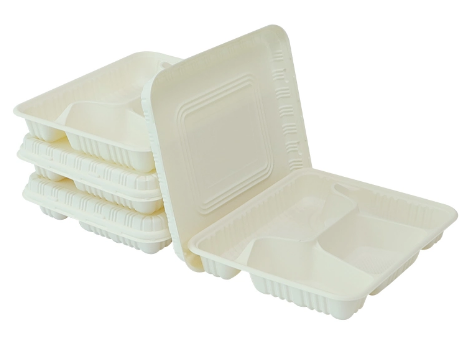
In this modern age of environmental consciousness, the demand for eco-friendly alternatives to traditional plastic trays has soared. One such alternative that has gained considerable popularity is the cornstarch tray. Crafted through a meticulous production process, these trays embody the essence of sustainability, making them a favored choice among the environmentally conscious.
At the heart of the cornstarch tray lies the refined essence of corn. Through a careful extraction and refining process, cornstarch is derived from the kernels of this versatile crop. Once the pure starch powder is obtained, it is skillfully blended with water and other additives, resulting in the creation of a remarkable bioplastic material. This unique material possesses the ability to be molded into various shapes and sizes, allowing for versatility and adaptability in its usage.
Characteristics and Functionality: A Perfect Fit
The beauty of
cornstarch trays lies not only in their eco-friendly nature but also in their remarkable versatility. These trays can be molded into an array of forms, making them suitable for a wide range of food items. Whether it be a dainty snack or a hearty meal, the cornstarch tray can accommodate varying portion sizes with ease and grace. Furthermore, these trays exhibit exceptional heat resistance, enabling them to withstand high temperatures without succumbing to deformation or releasing any harmful substances into the delectable fare they hold.
Biodegradation and Compostability: A Natural Cycle
One of the most captivating aspects of
cornstarch trays lies in their innate ability to biodegrade and contribute to the cycle of life. When disposed of in specialized industrial composting facilities, these trays undergo a natural breakdown process, ultimately enriching the soil with nutrient-rich compost. It is within the confines of these facilities, where ideal conditions of temperature and humidity prevail, that the degradation process is accelerated. However, it is crucial to note that the complete degradation of these trays is contingent upon their specific composition and the conditions provided by the composting facility.
Comparison between Sugarcane and Cornstarch Trays
When contemplating sustainable packaging options, one must diligently evaluate the cost-effectiveness, performance, and durability, as well as the environmental impact of various materials. This article endeavors to compare sugarcane and
cornstarch trays in these aspects, providing insights into their suitability for diverse applications.
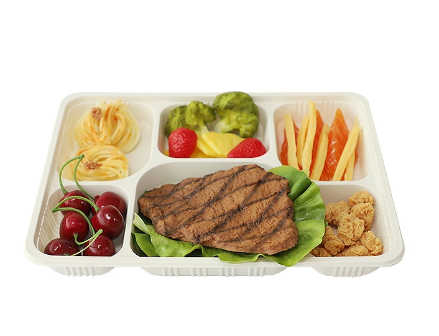 Performance and Durability
Performance and Durability
1. Stacking and transportation capabilities: Both sugarcane and
cornstarch trays are ingeniously designed to withstand stacking and transportation without compromising their structural integrity. It is crucial to assess their load-bearing capacity and resistance to impacts to ensure that the chosen trays can meet the specific requirements of the intended application.
2. Resistance to moisture and leakage: Sugarcane and
cornstarch trays exhibit varying levels of resistance to moisture and leakage. While both materials are generally considered suitable for containing food and beverages, it is important to evaluate their performance under different conditions, such as high humidity or exposure to liquids, to ensure the trays maintain their functionality and prevent any potential product damage.
Environmental Impact
1. Carbon emissions during production: Evaluating the carbon emissions associated with the production of sugarcane and
cornstarch trays is crucial for comprehending their environmental impact. Factors such as energy consumption, transportation, and waste management during production should be considered to determine the overall carbon footprint of each material.
2.Waste management and disposal considerations: Proper waste management and disposal are indispensable for sustainable packaging solutions. Sugarcane and
cornstarch trays, being biodegradable, can be composted, thereby reducing the environmental burden. However, it is necessary to assess the availability and accessibility of composting facilities in the intended region to ensure proper disposal and avoid potential waste accumulation.
Hyde Group can provide you with the
sugarcane trays and
cornstarch trays you want, which has 12 years of export experience and has exported to more than 150 countries. If there is a certain kind of sugarcane tray or cornstarch tray in your heart, you can feel free to contact us to custom and wholesale, we will reply within 24 hours.
 5172
5172 201
201 Oh, how delightful it is to discover the emergence of sugarcane trays as a most eco-friendly solution to the customary packaging materials of our time! The process by which these trays are fashioned involves the extraction of the very fibers of sugarcane, which are then artfully employed in a pulp molding technique, resulting in trays of surpassing sturdiness and durability. What is more, these trays possess an astonishing resistance to the perils of heat and grease, rendering them suitable for an extensive array of applications.
Oh, how delightful it is to discover the emergence of sugarcane trays as a most eco-friendly solution to the customary packaging materials of our time! The process by which these trays are fashioned involves the extraction of the very fibers of sugarcane, which are then artfully employed in a pulp molding technique, resulting in trays of surpassing sturdiness and durability. What is more, these trays possess an astonishing resistance to the perils of heat and grease, rendering them suitable for an extensive array of applications.

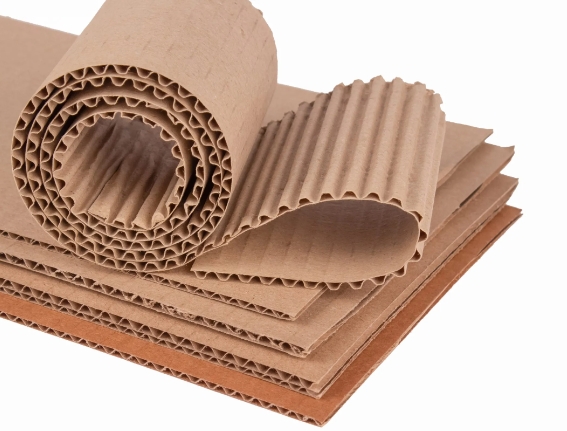 The Diversity of Corrugated Boxes Packaging
The Diversity of Corrugated Boxes Packaging
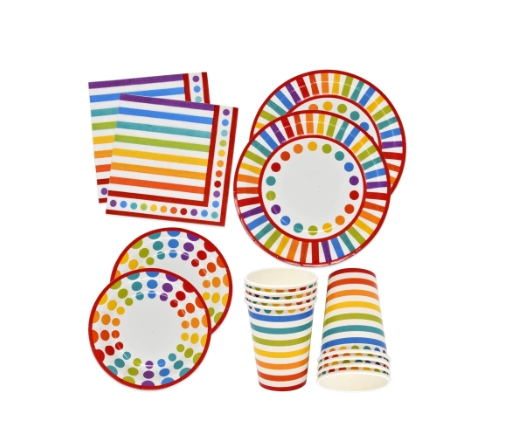 Health Concerns With Disposable Paper Plate Usage
Health Concerns With Disposable Paper Plate Usage
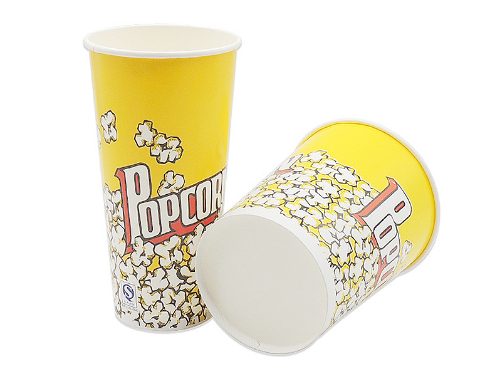 Understanding PE Coated Paper
Understanding PE Coated Paper
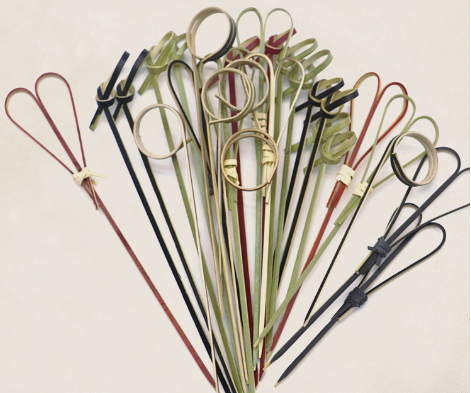 Versatile Bamboo Sticks: Types, Uses, and Benefits
Versatile Bamboo Sticks: Types, Uses, and Benefits